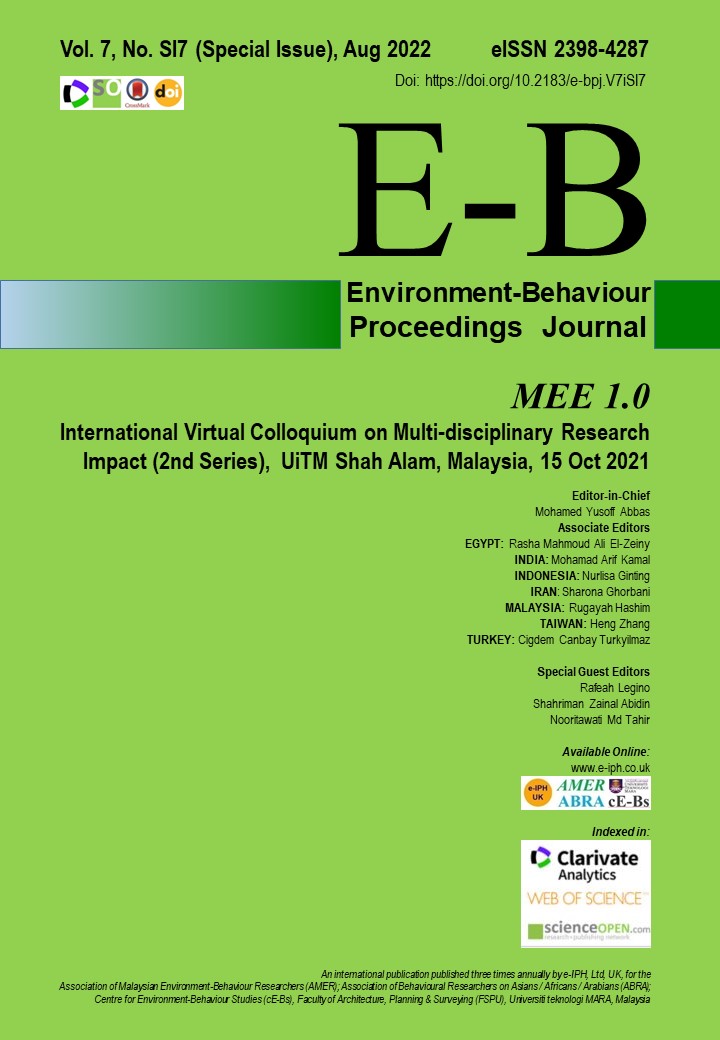Potential of Composition Market: Public acceptance in translated musical works on YouTube platform
DOI:
https://doi.org/10.21834/ebpj.v7iSI7.3765Keywords:
Translation Techniques, Compositional Market, Public Acceptance, Online Data MiningAbstract
Due to the worldwide demand for music consumption, more songs are translated into several languages. However, it remains a question whether the public i) prefers a loosely translated version, or ii) prefers a word-by-word translated version. Inspired by online data mining in business analytics, this quantitative research studied the public's sentiments on two translated versions of Disney's 'We Don't Talk About Bruno' song on the YouTube platform. Through semantic analysis, the researchers had found that the public prefers loosely, poetically, translated songs whilst preferring the harmony, melody, and musical sense of the songs to be retained.
References
Adedoyin, O. (2020) Quantitative Research Method. Near East University.
Altarabin, M. (2019). Basics of Translations: A Textbook for Arab University Students. Cambridge Scholars Publishing.
Das, B. and Anwar, M. (2020) Predicting Election Outcome from Social Media Data. International Journal on Natural Language Computing. 9(1), 21-29. https://doi.org/10.5121/ijnlc.2020.9103
Farhadloo, M., and Rolland, E. (2016). Fundamentals of Sentiment Analysis and Its Application. Sentiment Analysis and Ontology Engineering. 1-24. https://doi.org/10.1007/978-3-319-30319-2_1
Franzon, J. (2008). Choices in song translations. Singability in print, subtitles, and sung performance. The Translator 14(2), 373-399. https://doi.org/10.1080/13556509.2008.10799263
Gutierrez, B. (2018). ‘Moana’ is in 45 languages. Now Disney is adding Hawaiian to the list. Hawaii News Now.
Glomb, H. (2005) Music-linked translation (MLT) in Mozart’s operas: Theoretical, textual and practical perspectives. In Gorlee, D. (2005) Song and Significance: Virtues and vices of bocal translation, 121-161. https://doi.org/10.1163/9789401201544_005
Mertler, C. (2016) Introduction to educational research. Sage Publications. 111.
Newmark, P. (1981) Approaches to Translation. Pergamon, Oxford, and New York.
Newmark, P. (1988) A Textbook of Translation. New York: Prentice Hall.
Orehek, E., and Human, L. (2017) Self-Expression on Social Media: Do Tweets Present Accurate Positive Portraits of Impulsivity, Self-Esteem and Attachment Style?
Personality and Social Psychology Bulletin. 43(1), 60-70. https://doi.org/10.1177/0146167216675332
Skold, T. and Feldman, Y. (2014) The Efficacy of Social Media as a Research Tool and Information Source for Safeguards Verification. IAEA Symposium on International Safeguards: Linking Strategy, Implementation, and People. 1-8.
Simpson, J., and Weiner, E. (1989) The Oxford English Dictionary. Oxford: Oxford University Press.
Stamenov, M. (2009) Cognate in language, in the mind and a prompting dictionary for translation. ResearchGate.
Yellapu, V. (2018) Descriptive statistics. International Journal of Academic Medicine. St. Luke’s University Health Network. 4(1), 60-63. https://doi.org/10.4103/IJAM.IJAM_7_18
Downloads
Published
How to Cite
Issue
Section
License
Copyright (c) 2022 Afiqah Aisyah Saiful Bahar, Md Jais Ismail, Adi Nur Rasyid Rahmat

This work is licensed under a Creative Commons Attribution-NonCommercial-NoDerivatives 4.0 International License.





